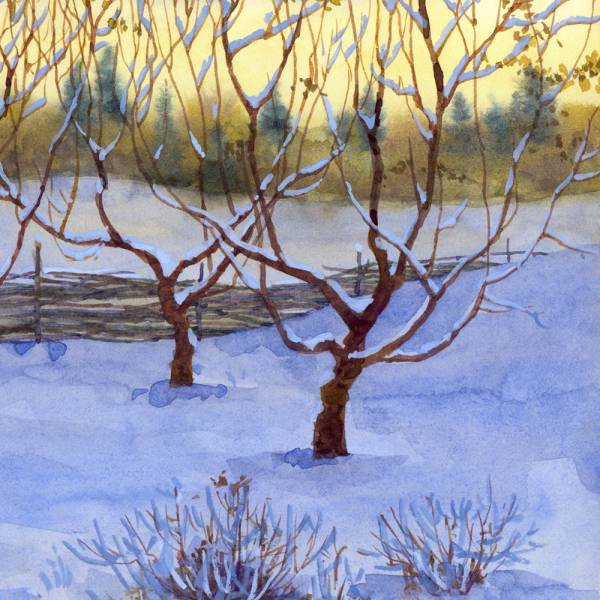
Reportedly this has been the coldest and snowiest winter in many years. For our garden plants, one positive aspect of this extreme weather is that the amount and duration of this winter’s snow has provided superb insulation, minimizing how deep the ground beneath is frozen, while protecting snow-covered plants from drying winds and punishing cold temperatures. But unfortunately, these snow and ice conditions have likely caused damage to trees and shrubs that doesn’t occur in a normal winter.
Snow and ice related damage: The built-up volume of repeated snowfalls weighs-down branches, especially those improperly pruned to handle snow loads. Snow dropping off roofs, along with compacted layering caused by repetitive shoveling and plowing, magnifies the problem. Wind, sand, salt and sun reflecting off the snow can cause leaf injury to shrubs like holly, rhododendron and other evergreens.
Wait to evaluate physical damage until most snow has gone. Evergreens with discolored, tattered or destroyed foliage will usually recover once warm weather enables new growth to emerge. Many shrubs and trees will recover from snow-load stress when their splayed branches spring back naturally. Boxwood, juniper, arborvitae and other plants may need their branches tied-up or cut-back to re-grow normally; this should be done early, before new growth begins.
It’s advisable to cut-back those shrubs or trees with split or torn branches and remove their damaged parts. In some cases cutting-back even uninjured branches enables latent buds to emerge and develop a stronger structure, re-growing into a more balanced shape.
Damage by wildlife: With such a persistent, deep-snow pack, deer are no longer able to find sufficient food on the ground. They modify their eating habits, expanding their diet to avoid starvation, eating virtually any foliage, buds and stems they can find. In heavy-deer-population areas they will completely defoliate many plants like rhododendrons, arborvitae, holly and yews to the extent of their reach.
Heavily-browsed foliage isn’t always fatal to the plant, just as leaves discolored by stress and reflected sunlight don’t always indicate the plant is dead. Scratch the stem, and if the tissue under the bark (the cambium) is bright green, your plant should start to grow when the weather warms. Wait until late spring to see if new growth appears.
Rodent damage: Persistent deep snow provides an ideal environment for rodents like voles and field mice to thrive: hidden from normal predators, they seek nourishment by eating roots and chewing through the bark and cambium layer of trunks, branches and stems, causing girdling damage that only becomes evident when the snow cover recedes. Maples and fruit trees are particularly susceptible to this girdling.
Once the snow has melted, if you find a stem slightly gnawed by voles or other rodents, it should be able to heal by itself; but if it is girdled more than 2/3 of its diameter, the part above the damage will have difficulty recovering and should be removed. You may also find girdling damage at the root crown, hidden below the soil surface.
Many trees and shrubs are being challenged by this winter’s unusual weather. Some plants may need to be rejuvenated, others replaced, opening opportunities for new plants. Use this winter’s experience to evaluate what to do during the growing seasons to avoid similar damage repeated next winter.
Wayne Mezitt is a 3rd generation nurseryman and a Massachusetts Certified Horticulturist, now chairman of Weston Nurseries of Hopkinton and Chelmsford, MA, and owner of “Hort-Sense”, a horticultural advisory business. Wayne currently serves as Trustee chairman for the Massachusetts Horticultural Society at Elm Bank in Wellesley MA.









